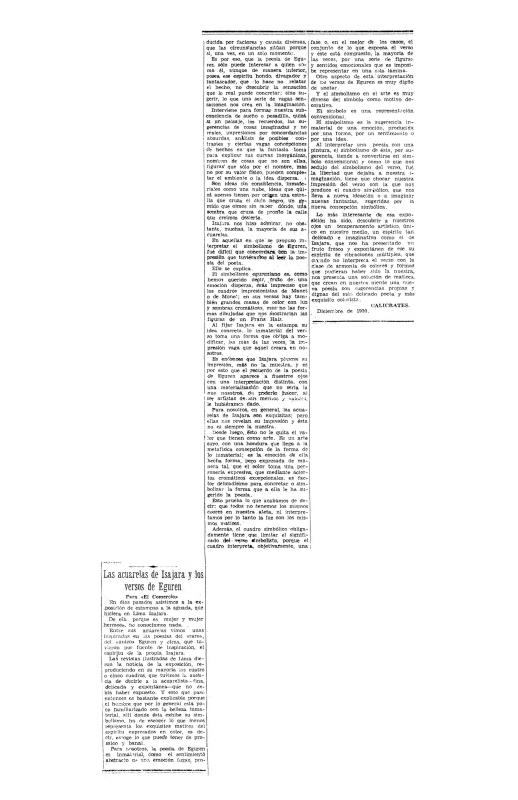Espinosa Saldaña also emphasized differences between “expressionist” stylization and decoration, championing a synthetic style that could express transcendental contents.
Los Duendes, an art group, was formed in Lima in the early 1930s. Its members were amateur painters, exponents of a symbolist style with literary roots and Art Deco elements whose aesthetic approach was adopted as an alternative to the prevailing school of indigenist painting. The central figure in Los Duendes was the poet José María Eguren (1874–1942); the first and only group exhibition organized by these “Peruvian Independents” took place in June 1931. Antonino Espinosa Saldaña was the only member of the group who had a long-term art career, although he did not take part in the exhibition. For that reason, perhaps his work sparked a brief exchange of opinions concerning the elusive place occupied by works of this nature in the local art scene. In December 1933, in Lima, Espinosa exhibited a set of ceramics and tempera drawings that included pictorial interpretations (bordering on abstraction) of Maurice Ravel’s Bolero. With titles like El tiempo and La inteligencia, these works were examples of the intensely allegorical genre and style referred to as “decorative.” This contradiction was duly noted by the critic Carlos Raygada, who questioned the relevance of the timid experimentalism he saw in some studies of “movement.” On the other hand, the still-unidentified F. H. Dursself had kind words for the dynamic qualities he detected in such works, seeing them as the seeds of a new avant-garde.
[See, in the ICAA digital archive, the following articles about Los Duendes: “Las acuarelas de Isajara y los versos de Eguren: para ‘El Comercio,’” by Calícrates Pablo Campal (doc. no. 1143323); “Diferenciaciones estéticas,” by Antonino Espinosa Saldaña (doc. no. 1143805); and “Ecos artísticos,” by Carlos Raygada (doc. no. 1143790)].



